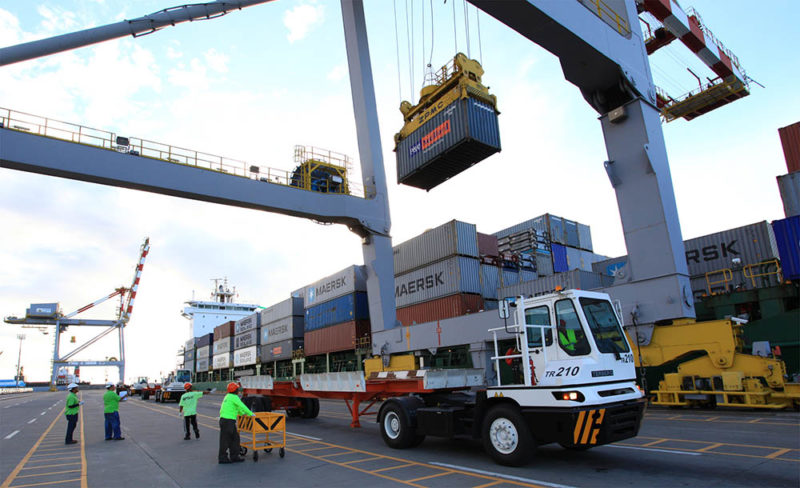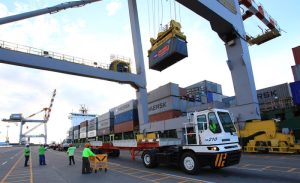

Cargo volume handled by Philippine ports increased 6.4% in the first quarter due to higher foreign and domestic cargoes handled.
Data from the Philippine Ports Authority (PPA) showed that ports under its jurisdiction processed 50.143 million metric tons (mmt) of cargoes in the first three months of 2016, up from 47.149 mmt in the same period last year.
Of the total, foreign cargoes accounted for 54% with 27.214 mmt, 7% higher than the 25.422 mmt handled in the same period last year.
Domestic cargoes, which represented 46% of the total, also strengthened, growing 5.5% to 22.928 mmt from 21.727 mmt.
Imports rose 9% to 17.980 mmt from 16.436 mmt, while exports registered a 2.7% increment to 9.234 mmt from 8.986 mmt.
By region, Luzon supplied 61% of the total cargo throughput with 30.925 mmt, 5% higher than last year’s 29.324 mmt. Mindanao also incurred a 7% growth to 11.513 mmt from 10.714 mmt, contributing 23% to the total. Visayas, which had a 15% share of the total, improved 8% to 7.705 mmt from 7.111 mmt previously.
The predominantly domestic port, Manila North Harbor, reported the highest volume of cargoes handled during the first quarter with 5.558 mmt of domestic cargoes, which surged 42% from last year’s 3.907 mmt. The previous top port, Manila International Container Terminal (MICT), followed with 3.746 mmt, a 26% decline from last year’s 5.063 mmt.
The base port of Macabalan in Cagayan de Oro came in third with 1.399 mmt, up 9.7% from 1.276 mmt last year, while Manila South Harbor improved 27% to 1.33 mmt from 1.045 mmt in 2015.
Box volumes decline
Container traffic for the first quarter declined 9% to 1.249 million twenty-foot equivalent units (TEUs) from 1.372 million TEUs in the same period last year.
Foreign containers dropped 17% to 694,137 TEUs from 837,989 TEUs, while domestic boxes were up 3.7% to 554,570 TEUs from 534,315 TEUs.
MICT remained the top container port with 328,313 TEUs, a sharp decline of 33% from 494,031 TEUs last year. Manila North Harbor came next, reporting a 5% increase to 284,027 TEUs from 270,381 TEUs. Manila South Harbor ranked third with 219,519 TEUs, or 5.7% up from last year’s 207,678 TEUs.
More ships docked at PPA ports during the first quarter, registering a 15% increase to 104,094 vessel calls from 90,448 ship calls in 2015. Domestic vessel calls grew 14.8% to 101,400 from 88,324 previously while foreign ship calls surged 26.8% to 2,694 from 2,124. It must be noted, however, that vessel size may affect the number of calls, as some liners may have deployed bigger or smaller ships last year.
More passengers used seaports during the first quarter of the year, growing 20% to 15.807 million passengers from 13.16 million passengers reported in the same period last year.
For the first time, PPA included a separate review of roll-on/roll-off traffic in its data. For the first quarter of 2016, PPA said a total of 1.349 million kg were transported via RoRo, of which 671,966 kg were inbound while 676,867 were outbound. No comparative figure was provided. – Roumina Pablo




